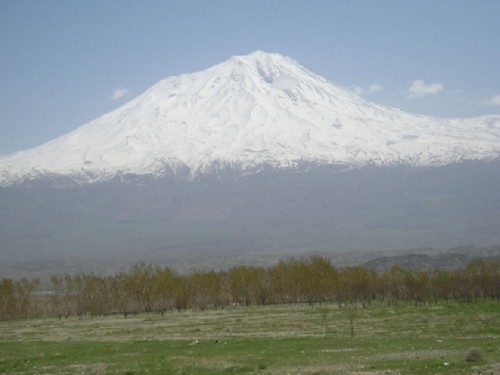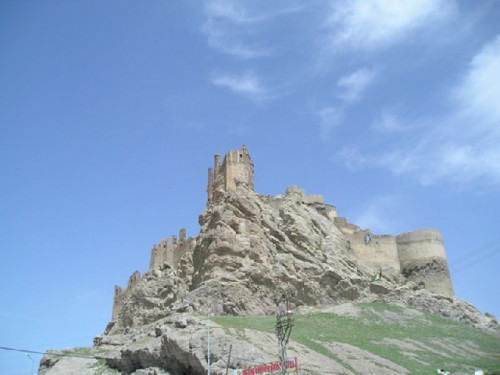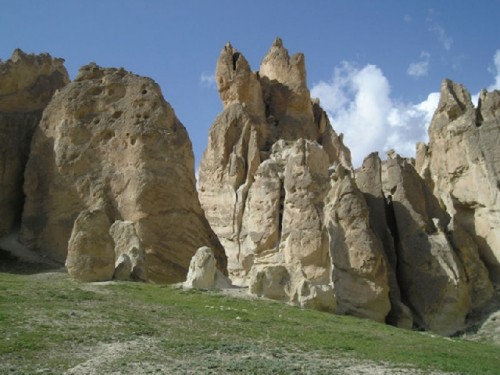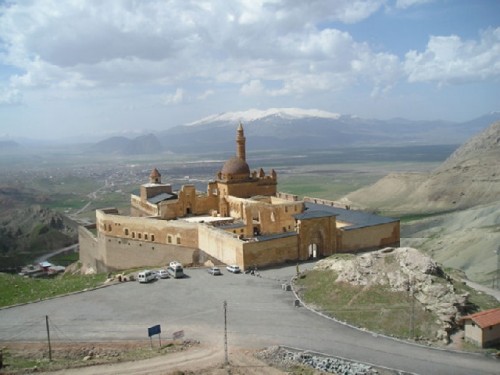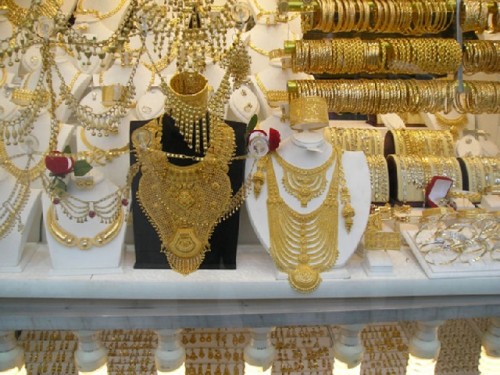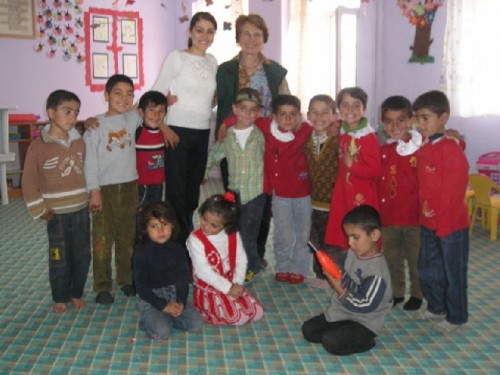Eastern Turkey: Part Two
Continued Travels Through Turkey
By: Zeren Earls - Aug 20, 2007
Cavustepe, Guzelsu, Yavuzlar
The next day we explored the region south of Van, where there are two important citadels: Toprakkale (Clay fortress) in Cavustepe near Gurpinar, and Hosap in Guzelsu, 25 and 60 km from Van respectively. Cavustepe (Sardurihinili) was the second capital of the Urartu Kingdom in 7th century BC. Of what was once an important cultural center now only the fortress remains. The guard provided details of life revealed by excavations. The upper fortress housed the king with his family and soldiers - about 2000 people. We walked about the temple where sheep and cattle were sacrificed, and then viewed the kitchen, toilets, cistern, and underground wine and wheat cellars, which still have well-preserved wheat of the time. The guard is one of 38 people worldwide able to decipher Urartu cuneiform. He read one of the tablets, which said, "May God not bless those who deface this writing". The Urartu language is related to Chechen.
The Hosap Citadel was built in 1643 by Suleiman Mamudi, a Kurdish governor under the sovereignty of the Ottoman Empire. Guzelsu, on the highway to Hakkari, is the village where the road to Hosap begins. There is a historic bridge by the same name before the turnoff. Made of stone arches, it is the oldest Ottoman bridge of the eastern region. We had tea at a sidewalk café near the bridge before our car began its uphill climb. Like the Van Citadel, Hosap is built on a large rock foundation and appears to grow out of it. The outer fortress protects the castle, which has an impressive gate. Unfortunately, we were unable to go beyond the gate for reasons of safety. There is a reception room, dungeon, mosque and cistern within the outer walls. The view of the surrounding hills is spectacular. To enjoy the view there are benches and tables, where we chatted with boys in school uniforms playing hooky.
Back in the village we had lunch at a truck stop. Dry beans and rice seemed a good choice, and naturally came with lots of bread. I was the only woman in the restaurant, and even outside on the street. Traveling with a photographer used to striking up friendships with a smile on his face, I felt welcome everywhere. Driving further south toward Baskale, we had to clear several security checkpoints. Young high school graduates are assigned to such duty as part of their military service, and are armed. Baskale seems to be a transit point for heroin smugglers originating in Afghanistan and making their way to Turkey through Iran.
The most rewarding part of the day was in Yavuzlar near Baskale, a village of 110 houses set against volcanic rock formations like giant sand dunes. Not on tourist maps yet, the geological wonder is a small version of Cappadocia - gigantic sculptures shaped by nature that take on different moods with the shifting light. Here mud houses plastered with dung faced velvety hills dimpled by melting snow. Young boys and girls herded their flocks led by sheep dogs. Laundry fluttered against the backdrop of volcanic rock. Struck by the beauty of the setting while staring at poverty, I had mixed emotions about the inevitable discovery of this area by the tourism industry. Meanwhile the villagers earn a living by herding or by smuggling gasoline from Iran on horses, each carrying 40 barrels, over mountain tracks at night.
Of course we got invited for tea. Entering a five-room house, built by its Kurdish owners, we left our shoes at the door. The guest room, with a Persian rug, had cushions and folded blankets for seating along the perimeter. There was a gas stove, a TV in the corner and framed Koran verses on the walls. On an oil cloth on the rug were two kinds of bread, yogurt and cheese, all homemade. The women brought in the tea, and left after serving us. Our host, 70 years old, was a widower with four children, three boys, one girl and three grandchildren. Their names matched the current events of their birth dates; Savas (Battle), Baris (Peace) etc. All but one had Turkish names; the three-year-old granddaughter had a Kurdish name, Roja. One son was away on military duty. Although I was the only woman in a roomful of men, and without head cover, I felt at ease chatting, and complimented the food. The yogurt was the best I've ever had. We were invited to spend the night and our host offered to kill a sheep for us. To further prove their healthy way of life, he said they burned dung instead of coal in the living room. We thanked our hosts for their generosity and said goodbye. Then we drove around the back to fill up with gas at the neighbor's house.
Dogubeyazit, Mount Ararat
The next morning we headed north to Dogubeyazit, Turkey's easternmost city, 175 km from Van and 32 km from the Iranian frontier. The scenic road between Lake Van and green hills runs for a while before turning inland toward Muradiye. In addition to grazing cattle, the hills are dotted with lookout towers to detect Kurdish militants, who are mostly active in the mountains. Clearing the routine checkpoints, we arrived at Muradiye Falls, which make a refreshing road stop. The falls ran forcefully, gaining strength from the melting snow and forming a rainbow in the mist. A picturesque suspension bridge nearby added to the charm. We continued paralleling the mountain range that forms the Iranian border. At the Tendurek Pass we reached an altitude of 2644 meters. The landscape turned into one of red clay and pieces of black basalt rock. 40 km from Dogubeyazit, majestic Mount Ararat appeared covered in snow. We felt fortunate to witness its splendor without its usual cloud cover.
Ararat mountain complex has two main peaks, Great Ararat, a dormant volcano of 5165 meters above sea level, and Little Ararat, considered to be spent and 3896 meters high. Great Ararat with its glacier peak is one of the highest mountains in the world. Its surrounding landscape is dominated by a ring of mountains all well over 3000 meters high. The earliest record of climbing Great Ararat is from an 1829 expedition in search of Noah's Ark, which is believed to have run aground here. Many expeditions since then have failed to reveal any remains. It is speculated that Noah and his family may have broken up the ark to build their new home. Due to security precautions it is difficult to get permission to climb the mountain. We were stopped while photographing it because we were near a military zone. Eventually we got permission from the commander by requesting a soldier to accompany us to ensure our cameras pointed toward the mountain, away from the military zone. Later, over rosehip tea, the commander explained that people posing as tourists had photographed the military compound, as confirmed by confiscated films.
A city of 56,000 people, Dogubeyazit is a stop-over on the busy international routes that pass through the region. Its markets are filled with mass-produced imports from Iran, Pakistan and other eastern countries. For lunch we went to a place for doner kebab and ayran, a yoghurt drink. Strolling the arcades, my friend located a bottle of inexpensive cognac; I did not buy anything since there were no locally made crafts.
The major tourist attraction, 7 km from Dogubeyazit, is the Ishak Pasa Palace, which rises up over the valley below. This noteworthy 17th century architectural complex was built by Ishak Pasa, a Kurdish emir on whom the sultan had conferred the title of governor. The imposing structure controlled the old Silk Road caravans, leading to the accumulation of much wealth by its owners. Situated by an ancient Urartian fortification, the architecturally eclectic building of Persian, Seljuk and Ottoman styles took 99 years to complete. Centered on two courtyards, it has 366 rooms with a fireplace, an ornate mosque between the women's and the men's quarters, and a ceremonial dining hall. The building has been besieged by the Russian army five different times, most recently in 1917, when its solid gold door was taken to Moscow. Although the palace has lost a great deal to pilfering soldiers, it is a treasure of carved stone. After a tea break with a splendid view and another round of photographs of Mount Ararat, we returned to Van.
On our final day we visited a rug shop for Van's renowned kilims, flat-weave carpets woven by Kurds. The shop keeper identified several: old ones made with natural root dyes and new ones with synthetic dyes. As he unfurled each one, he explained the stylized symbols, such as ram horn patterns. He was delighted to have us in the store, as business had been slow due to tourists' fear of terrorism. I bought two carpets, a small and a large one, at very modest prices. We passed by a gold jewelry shop, gazing at the elaborate necklaces begging to be photographed. The visit to the honey shop was unique; unlike the usual cluttered small shops, this one was spacious and immaculately clean. Round tin cans of honey, arranged by flavor, were stacked neatly on shelves along the walls; small towers of additional cans and jars sat on glass counter tops. Bins on the floor designated an area for sampling. Once I tasted the honey in its natural comb, my decision of what kind to buy was immediate. Although expensive, this honey was a rare find.
Living with terrorism has taken a toll on the residents of cities near northern Iraq. Caught between the Turkish military and the Kurdish insurgents, many have resettled as refugees in Van, living in shantytowns on the outskirts of the city. Upon my request our driver took us to the Mustafa Kemal primary school in an outlying neighborhood. To assess the school's needs we met with the principal, so that we might purchase essentials instead of giving cash. A visit to the kindergarten convinced us that the carpet remnants patched over the concrete floor needed replacing. There were hardly any toys around; a TV in the corner provided passive entertainment. We invited the teacher to go shopping with us, first for a carpet, then for toys. We placed a rush order for a wall-to-wall carpet, and had the teacher choose the toys paid by donations Turkish friends had given me to support a school. The beaming teacher returned to his classroom with bags of toys, a workbench, Lego blocks, hand-puppets, plastic animals, balls, play-dough, books and the like.
The next morning the principal invited us for Van's famed breakfast. At a sidewalk café we sampled dishes new to me; murtaba is made with flour, butter and eggs; kavut is roasted wheat ground in a mortar, and sautéed in butter. Fresh cream, honey, eggs with sausage, cheese, yogurt and bread all crowded the table. To drink we had a glass of warm sheep's milk as well as tea. After breakfast we returned to the school to see the newly furnished kindergarten. The children had left their shoes at the threshold and were playing on the new carpet. One little boy brought tools from the work bench to be included in the group photo.
On returning to Istanbul, I felt like I had just visited a different country. This was a part of Turkey deeply rooted in the East in cultural terms, but awakening to the ways of the West as long-neglected modernity reached the eastern frontiers. May their tradition of hospitality and friendship survive the rigors of modern times.

